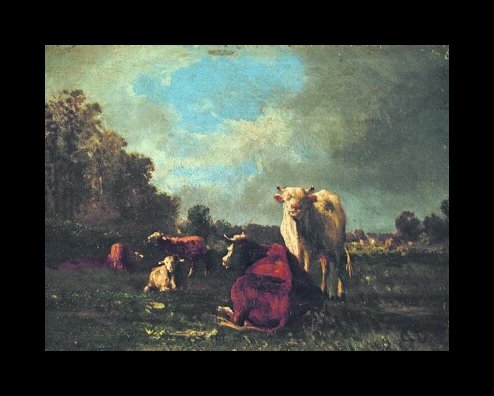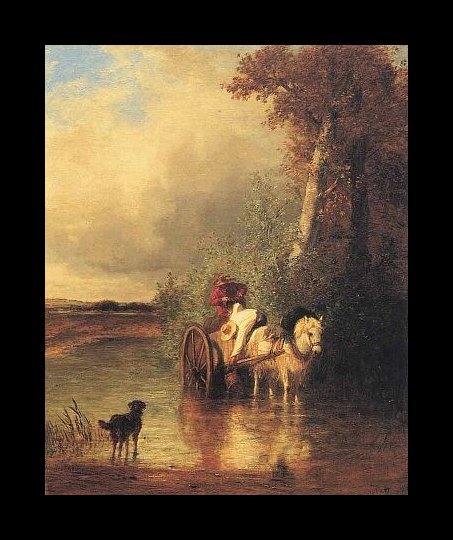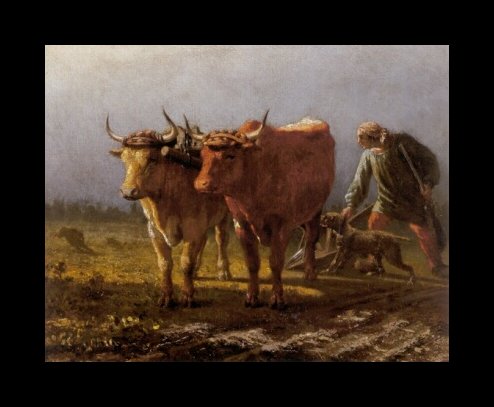Constant Troyon (1810-1865)
Get a Constant Troyon (1810-1865) Certificate of Authenticity for your painting (COA) for your Constant Troyon (1810-1865) drawing.
For all your Constant Troyon (1810-1865) artworks you need a Certificate of Authenticity (COA) in order to sell, to insure or to donate for a tax deduction.
Getting a Constant Troyon (1810-1865) Certificate of Authenticity (COA) is easy. Just send us photos and dimensions and tell us what you know about the origin or history of your Constant Troyon (1810-1865) painting or drawing.
If you want to sell your Constant Troyon (1810-1865) painting or drawing use our selling services. We offer Constant Troyon (1810-1865) selling help, selling advice, private treaty sales and full brokerage.
We have been authenticating Constant Troyon (1810-1865) and issuing certificates of authenticity since 2002. We are recognized Constant Troyon (1810-1865) experts and Constant Troyon (1810-1865) certified appraisers. We issue COAs and appraisals for all Constant Troyon (1810-1865) artworks.
Our Constant Troyon (1810-1865) paintings and drawings authentications are accepted and respected worldwide.
Each COA is backed by in-depth research and analysis authentication reports.
The Constant Troyon (1810-1865) certificates of authenticity we issue are based on solid, reliable and fully referenced art investigations, authentication research, analytical work and forensic studies.
We are available to examine your Constant Troyon (1810-1865) painting or drawing anywhere in the world.
You will generally receive your certificates of authenticity and authentication report within two weeks. Some complicated cases with difficult to research Constant Troyon (1810-1865) paintings or drawings take longer.
Our clients include Constant Troyon (1810-1865) collectors, investors, tax authorities, insurance adjusters, appraisers, valuers, auctioneers, Federal agencies and many law firms.
We perform Constant Troyon art authentication, appraisal, certificates of authenticity (COA), analysis, research, scientific tests, full art authentications. We will help you sell your Constant Troyon or we will sell it for you.

Constant Troyon was the son of an employee of a porcelain factory in Sevres. He was given lessons in how to draw by two employees of the factory, the flower painter Denis-Desire Riocreux, and the landscapist Achille Poupart. Constant Troyon was a landscape painter, and also a wonderful animal painter. He was in fact one of the great animal painters of the nineteenth century. He was also a member of the Barbizon school, and one of the earliest members of the school to gain commercial success.
In 1830, he became friends with the painter Paul Huet who introduced him to the naturalistic landscape paintings of the time from England, such as, ‘Hay Wain’ by Constable. He was also to make friends with the painter Camille Roqueplan. It was Camille Roqueplan who was to introduce him to painters of the Barbizon school such as Narcisse Virgile de la Pena, and Jules Dupre who were both to have a great influence over him.
In 1840, he began painting landscapes in the surroundings of the Forest of Fontainebleau. He also painted in other regions of France such as Brittany, and Normandy. In 1847, a trip to Holland was to have a striking effect on him, and especially the Dutch painters of the seventeenth century. He was especially struck by the paintings of the Dutch painters Paulus Potter, and Aelbert Cuyp. Paulus Potter’s paintings changed the way in which animals were depicted. He made them the focus of the paintings rather than the backdrop. He wandered around the Dutch countryside, sketchbook in hand, drawing them. Aelbert Cuyp was a landscape painter who was known for his river scenes, and landscapes showing cattle, he was also said to be a Master of the light.


The influence of these two painters was so great that when Troyon returned from his trip to Holland he decided to concentrate on animal subjects. As well as being a very talented landscapist, he was also to become one of the great animal painters of the 19th century. His paintings were very often produced on a very large and grand scale, and showed cattle grazing or oxen ploughing.

He was to win medals in the Salons of 1846, and 1848. In 1855, he was a member of the jury of the Universal Exposition and also won a First Class medal. He had success not only in France, but also internationally. He had exhibitions in London, Vienna, and Brussels. Of course with all of this prestige both at home, and internationally, he was also to gain financial success. He employed a well known architect of the day to design a large town residence with his own studio.
Sadly, the Salon of 1859 was the last one in which he was to exhibit, as he began to be affected by the paralytic symptoms of a venereal infection. As a consequence of the disease he also began to have fits of madness. In the spring of 1864, he was confined to an asylum for eight months, shortly afterwards he died. This was a tragic end to the life of a man who produced some of the most exquisite paintings of animals at one, and in harmony with the earth, and their surroundings. To have the opportunity to look at one of Constant Troyon’s animal paintings really is the opportunity to look at the way art is able to portray animals, and nature with beauty and grace.


His paintings can now be seen in museums all over the world, such as the Wallace Collection, the National Gallery of London, and the Hermitage Museum in St Petersburg, to name just a few.
Reviews
1,217 global ratings
5 Star
4 Star
3 Star
2 Star
1 Star
Your evaluation is very important to us. Thank you.
